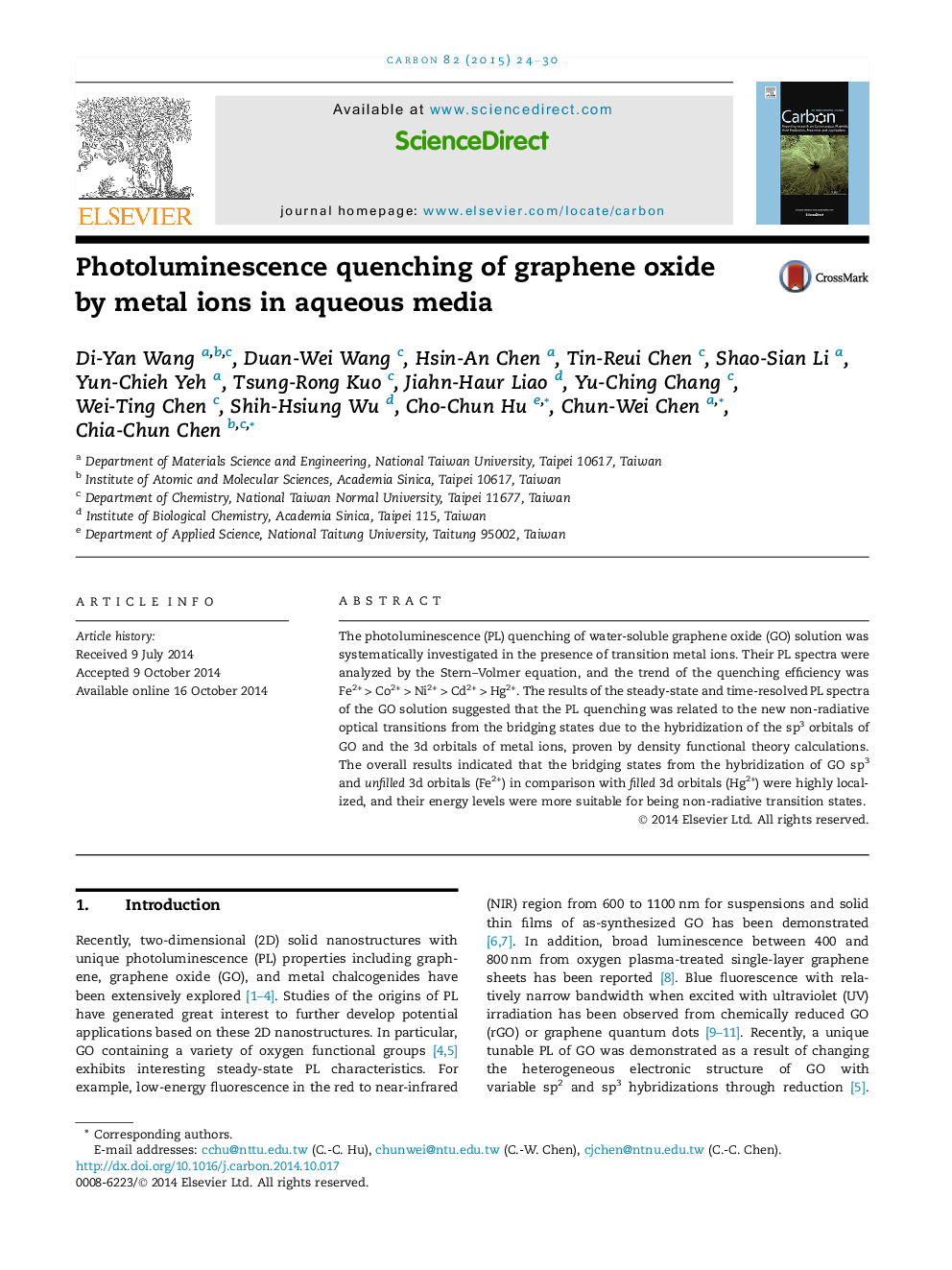| Article ID | Journal | Published Year | Pages | File Type |
|---|---|---|---|---|
| 1413586 | Carbon | 2015 | 7 Pages |
The photoluminescence (PL) quenching of water-soluble graphene oxide (GO) solution was systematically investigated in the presence of transition metal ions. Their PL spectra were analyzed by the Stern–Volmer equation, and the trend of the quenching efficiency was Fe2+ > Co2+ > Ni2+ > Cd2+ > Hg2+. The results of the steady-state and time-resolved PL spectra of the GO solution suggested that the PL quenching was related to the new non-radiative optical transitions from the bridging states due to the hybridization of the sp3 orbitals of GO and the 3d orbitals of metal ions, proven by density functional theory calculations. The overall results indicated that the bridging states from the hybridization of GO sp3 and unfilled 3d orbitals (Fe2+) in comparison with filled 3d orbitals (Hg2+) were highly localized, and their energy levels were more suitable for being non-radiative transition states.
